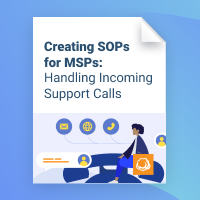When building a successful managed services provider (MSP) business, a lot of the focus naturally tends to be on adding new customers to expand the business. However, if an MSP wants to accelerate its growth, it should also consider when it might be appropriate to remove customers from its lineup.
While it may seem counterintuitive to a growing business to fire a customer and lose their business, there are times when it might make sense for an MSP to do so. One reason to fire a client is when that client refuses to pay on time or even pay the invoice, even after repeated warnings. While it is unfortunate, it is a clear-cut reason to remove a client from the customer roster.

There are also other, less black-and-white situations where an MSP may choose to fire a client. One reason may be clients who refuse to update systems or processes as recommended, creating risk for the MSP or new challenges outside the scope of services. Another, perhaps more common reason is that the client requires a significant amount of work and hours from the service team compared to the size of its contract or the revenue it brings to the MSP. In these cases, keeping the client costs more in support than the revenue it generates and may ultimately hinder long-term business growth by preventing the MSP from taking on more profitable clients.
Further reading How MSPs Can Win Bigger Clients: 3 Essential Steps
Deciding to fire a client shouldn't be taken lightly but, once the decision is made, the MSP should make sure they proceed tactfully and carefully. This is to ensure that it is a peaceful transition that doesn’t create a bad reputation for the MSP in the market, as well as avoid any potential legal issues that could arise. With careful planning and the appropriate degree of purposefulness, though, it is possible to make this transition gracefully.
Further reading How to Properly Offboard MSP Customers
First, depending on the situation, the MSP should ensure they have given the customer a chance to resolve any issue that may lead to firing – for instance, sending a 30-day notice as a reminder to pay outstanding balances if the client fails to pay bills on time. This notice can include language to the effect that failure to pay could result in termination as a client. The MSP could also set up a discussion with the client to discuss their needs and how to better align with the company’s services. In either case, this can serve as a warning to clients and give them a chance to remediate any reason for firing them before the MSP does so..
Second, the MSP should review its contract with the client to see if any SLAs or termination clauses align with the reason for the desired termination. If there is such a clause, this will provide a clear-cut reason for firing the client and create a corresponding legal course of action. In any case, the MSP may consult with an attorney to determine the appropriate way to move forward to ensure there will be no issues with the process.
Finally, the MSP must have a difficult and tactful conversation with the client about termination. They should make sure it is laid out in writing, with the support of the MSP’s legal team, to ensure a smooth transition. Additionally, the MSP might consider whether they have partners or peers in the industry that they can recommend or that could help transition the client in order to achieve a calm and peaceful transition.
Firing a client is a decision that shouldn’t be taken lightly, but it can be the right choice for an MSP looking to remedy any long-standing issues with the customer or better set itself up for scalable, long-term growth.







